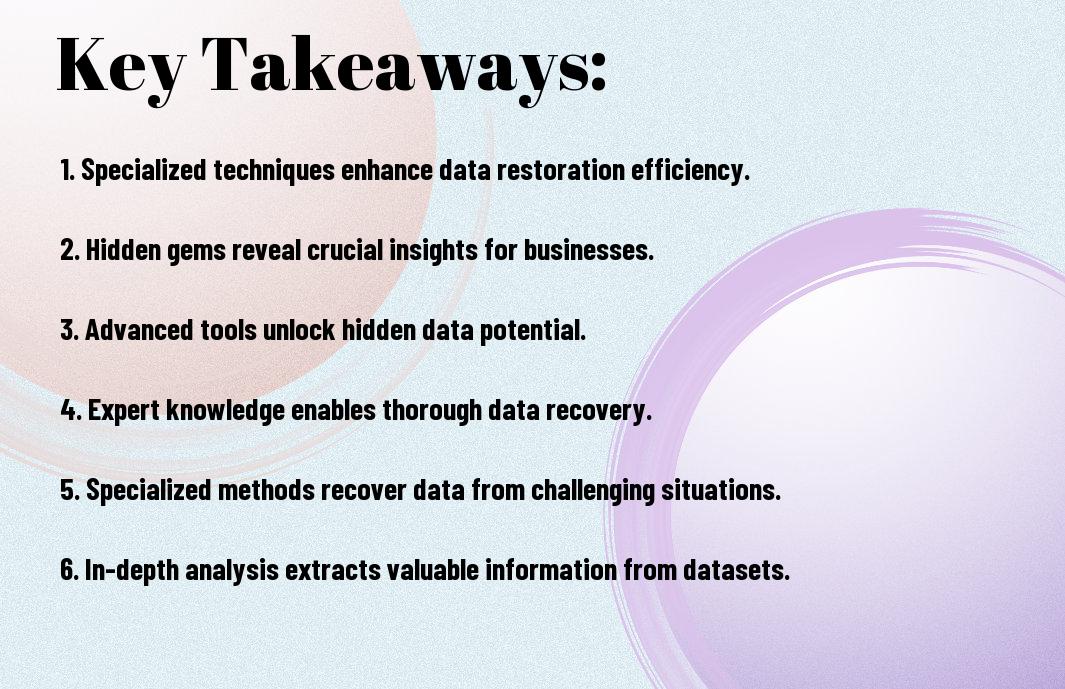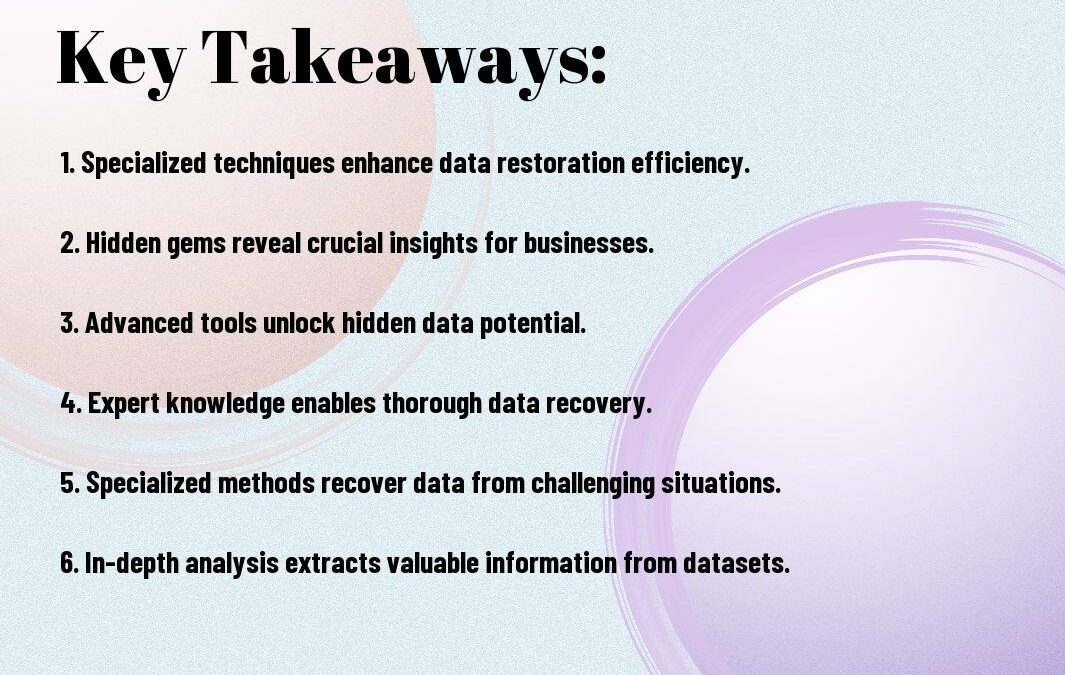There’s a mysterious world within data restoration that holds hidden treasures waiting to be uncovered by specialized techniques. In this enlightening blog post, we will research into the intricacies of data restoration, shedding light on the unique methods and tools used to extract valuable gems from the digital realm. Prepare to be amazed as we unveil the secrets behind the magic of restoring data, guided by specialized experts in the field. Let’s launch on a journey of discovery together!

The Art of Data Restoration
Uncovering Hidden Patterns
For those skilled in the art of data restoration, uncovering hidden patterns within a dataset is like solving a complex puzzle. By utilizing specialized techniques and algorithms, these experts can reveal valuable insights that may have otherwise gone unnoticed. The ability to identify these patterns can lead to a deeper understanding of the data and ultimately help in making informed decisions.
Deciphering Data Anomalies
To the untrained eye, anomalies in a dataset may seem like random errors or outliers. However, for data restoration specialists, deciphering these anomalies is a crucial part of the process. By carefully analyzing and investigating these irregularities, experts can uncover valuable information about potential data corruption, faulty sensors, or even cyber-attacks.
Anomalies can provide key insights into the integrity and reliability of the data, helping professionals in data restoration to troubleshoot and rectify any issues effectively. By paying close attention to these anomalies, experts can ensure the accuracy and quality of the restored data, offering a comprehensive and reliable analysis for their clients.
Specialized Techniques for Data Recovery
Advanced Algorithms for Data Retrieval
Some of the most sophisticated techniques for data recovery involve the use of advanced algorithms. These algorithms are designed to analyze the damaged or corrupted data and reconstruct it in a way that makes it usable again.
- Deep Scan Technology: Utilizes in-depth analysis to recover lost files.
- RAID Recovery: Specialized techniques for restoring data from RAID systems.
- Partition Recovery: Focuses on recovering data from lost or damaged partitions.
Utilizing Machine Learning for Data Restoration
Any cutting-edge data recovery process involves harnessing the power of Machine Learning. This technology enables systems to learn from data patterns and make predictions, facilitating the identification and restoration of lost or corrupted files.
An advanced Machine Learning algorithm can recognize similarities in data structures, making it possible to recover files even in cases where conventional methods fail. By analyzing vast amounts of data, Machine Learning can enhance the efficiency and accuracy of the data recovery process, providing a more comprehensive solution for restoring lost information.
Machine Learning plays a crucial role in modern data recovery processes, revolutionizing the way experts approach complex data loss scenarios. By leveraging the capabilities of Machine Learning, data restoration specialists can achieve remarkable results in salvaging critical information from various storage devices.
Overcoming Common Challenges
Handling Data Corruption
Many data restoration processes encounter the challenge of data corruption, where the information within a dataset becomes unreadable or inaccessible. This can occur due to various reasons such as hardware malfunctions, software bugs, or human errors. Specialized techniques like data scrubbing and error-checking algorithms are utilized to identify and repair corrupt data, ensuring a successful restoration process.
Dealing with Incomplete Data Sets
Corruption within data sets can also manifest as missing or incomplete information. When faced with this challenge, data restoration experts employ strategies such as data interpolation, where missing values are estimated based on existing data points. Additionally, techniques like data fusion may be utilized to merge incomplete datasets from multiple sources, creating a more comprehensive and accurate representation of the original information.
Another important aspect of handling incomplete data sets is the consideration of potential biases or errors that may result from the interpolation or fusion processes. Data restoration specialists must carefully assess the quality and reliability of the restored data to ensure its usefulness and accuracy for further analysis or utilization.
To wrap up
Following this exploration into specialized techniques of data restoration, it becomes evident that hidden gems lie within data recovery waiting to be unveiled. By delving deeper into these methods, one can uncover a wealth of possibilities for salvaging and restoring valuable information. Through the lens of specialized techniques, the intricate process of data restoration transforms into an art form that requires both precision and expertise.

